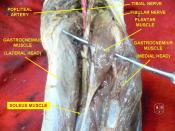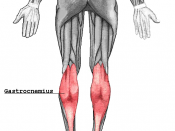The purpose of this lab was to determine how much electrical activity was conducted through the flexor digitorm muscles of the forearm of both the dominant and non-dominant arms using electromyography. The electrical activity increased within the muscles that are contracted with each stronger contraction. Electromyography records the electron signals that are associated with muscle activation. The electrical activity (motor unit recruitment) increases in the muscles that are being contracted. An electromyography detects the electrical potential generated by muscle cells when they contract or relax. These muscles are stimulated by signals from nerve cells (motor neurons). Once muscles are stimulated and causes the muscle to contract, the contraction produces an electrical signal. The function of a muscle is to convert chemical reactions to mechanical reactions, causing muscles to contract, or shorten. There is either afferent signal, which sends signals away from the muscle towards the brain or efferent signals, which send signals from the neuron to the muscle to cause a contraction.
A motor unit is a motor neuron and all of the muscle fibers that it innervates. Although a single motor neuron can innervate several fibers, each muscle fiber is innervated by only one motor neuron. The size of a motor unit determines the speed in which it travels and how many muscle fibers are needed to perform the contraction. When you have to increase the strength that is needed in a muscle contraction, the brain sends a signal to the motor neurons. When a somatic motor neuron generates an action potential, all of the muscle fibers it innervates respond to the secreted neurotransmitter by generating their own action potential and contracting.
Method
For our group experiment, the subject placed three electrodes on the gastrocnemius muscle of her leg. She proceeded to do four calf raises. The first two...


